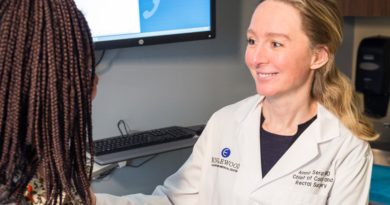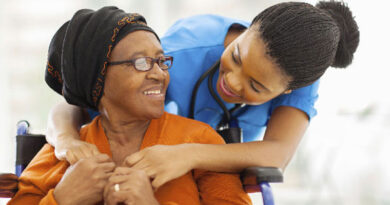NYC Child Care Centers Have Success During Pandemic
BY FERN GILLESPIE
When Governor Cuomo announced that public schools throughout New York State will open in the fall, parents became concerned about having their children go back to school in the age of COVID-19.
The DCCNY recommends parents request information on what’s happening in the child care center every day:
• Ask providers about safety recommendations they are putting in place.
• How often are providers cleaning the
classrooms and the toys?
• How is mealtime handled?
• What activities are they allowed to do
outside or not allowed to do outside?
• What are the providers’ personal protective equipment (PPE)?
• What is the procedure for parent pick-up and drop-off?
• Are parents allowed in the centersor homes?
• How do parents socially
Although the pandemic shut down New York City’s 1,800 schools (including Pre-K), there were 93 regional enrichment centers open to serve the child care needs of first responders and essential workers. Later, the city opened emergency child care programs located in community-based organizations and home-based family child care provider programs. These schools have been on the frontline in providing safe child care for New York City’s families during the COVID-19 crisis.
The nonprofit Day Care Council of New York (DCCNY) has worked with publicly funded New York City child care centers and family childcare programs (UPK, 3K, Head Start, early Head Start, etc.) for over 70 years. It decided to examine 13 emergency child care programs in Manhattan, Queens, and the Bronx to determine how they were operating during this pandemic. The research included nine center-based providers and four family child care providers. The goal was to determine how these centers established successful health, safety, and instructional practices.
This July, DCCNY released their report Child Care in a Pandemic: What We Learned from Emergency Child Care Programs and How We Can Safely Reopen Our Early Education System. “There’s been a lot of talk and a lot of anxiety from child care providers, families and the public about what it’s going to be like to go back to school,” said DCCNY Senior Research Analyst Mai Miksic, who co-authored the report. “We felt there was a lot to be learned from the emergency child care centers operating during this entire pandemic. I think it’s a good starting point around discussions of what is necessary to keep children and their family safe. Also, how we continue to provide quality care for those families.”
What the DCCNY discovered was that no one in the study – neither child nor adult – was diagnosed with COVID-19. In fact, the centers had enhanced the CDC protocols to ensure a safe learning environment. The cleaning procedures were part of the new normal of operating under pandemic conditions. Deep cleanings and the sanitizing of the centers and family programs has become routine. Nurses, provided to center-based ECCs by the Department of Education, were critical to the safe operation and morale of the staff. Social distancing was a priority despite social distancing and mask being difficult for young children. Some centers had larger tables to space the children out, others bought plexiglass dividers, which allowed children to sit across from each other. There were extra efforts to keep children apart through a buddy system or creating smaller bubbles so there wasn’t constant interaction among all the children. One of the biggest challenges around mealtime was teaching children not to share food with each other. The care centers created some extra ideas like taking off shoes before entering center. Some required staff to change clothes to scrubs at work.
The child care providers noticed that the pandemic was wearing on the children. It was becoming a mental health issue. Children had to limit physical affection and hugging was discouraged. Staying six feet apart from their friends was required. “Children five years old and under are very social creatures; they want to interact with each other and they want to learn those social skills and fundamentals,” said Miksic. “Children need affection. Some children were coming from situations where family members had gotten sick or passed away from COVID-19.”
The Child Care in a Pandemic report highlighted the concerns of child care providers that included enrollment, lack of staffers, PPE supplies, and social distancing. “All child care providers are essential workers throughout New York State,” said DCCNY Executive Director Andrea Anthony. “These child care providers started a regimen that is quite interesting and inspiring in a lot of ways. They were vocal in how they felt about being an essential worker and how important it was to be able to contribute back. To have uniformity and have people speak up about not fearing for their own lives, I felt was very heartwarming.”


